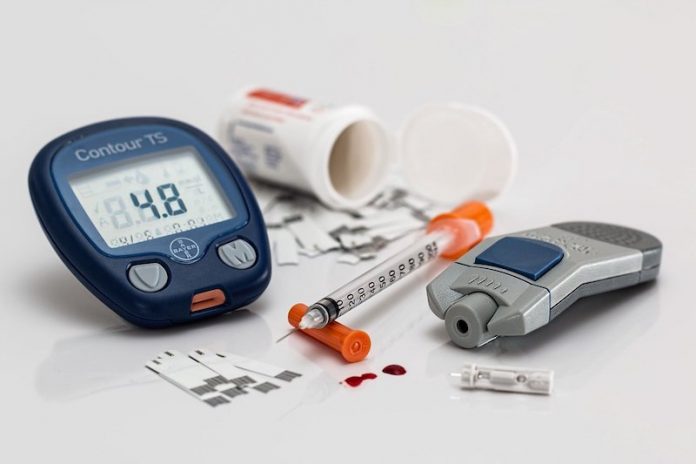
In a new study, researchers have developed a new drug leads to treating type 2 diabetes in millions of patients who are seeking to better control their blood sugar without the common side effects of nausea, vomiting, and, in select cases, undesired weight loss.
The research was conducted by a team at SUNY Upstate Medical University.
A common group of drugs used to treat type 2 diabetes is glucagon-like peptide-1 receptor (GLP-1R) agonists.
While they do lower blood sugar levels in diabetic patients, their side effects include nausea, vomiting, and weight loss.
In the study, the team found a way to combine two molecules into a new substance that so far seems to lower blood sugar without those undesired side effects.
In technical terms, the team developed a new area of bioconjugation—a chemical technique used to couple two molecules.
By binding together exendin-4 (Ex4), an FDA-approved GLP-1R agonist, to dicyanocobinamide (Cbi), which is a small piece of the complex vitamin B12 molecule, they produced Cbi-Ex4 in a technique they call “corrination.”
They collected data from testing Cbi-Ex4 in the musk shrew (Suncus murinus). The mammal used in this study due to its ability to vomit (rodents and many mammals lack that ability).
The team found beneficial effects: the new drug improved blood sugar levels during glucose tolerance tests and a profound reduction in vomiting compared to Ex4.
Importantly, no weight loss was noted, again in stark contrast to the currently approved GLP-1R agonist, making this new drug ideal for patients who require glucoregulation without affecting their body mass index (BMI) levels.
The team says this drug could therefore benefit diabetes patients who also live with cystic fibrosis, COPD, sarcopenia, cancer or HIV, where weight-loss is counter-indicated.
One author of the study is Robert P. Doyle, the Laura J. and L. Douglas Meredith Professor in the Department of Chemistry in the College of Arts and Sciences.
The study is published in Cell Reports.
Copyright © 2020 Knowridge Science Report. All rights reserved.



